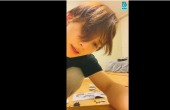Home > Feature
[Seoul Saunter] Haebangchon: Home to artists, once a refuge for war displaced
Seoul is a vibrant megalopolis with modern high rises crowding the city‘s major arteries. Nestled among the gleaming buildings are maze-like alleys that appear to have escaped the passage of time. The Korea Herald explores the many nooks and crannies of Seoul, proclaimed the capital of Joseon in 1392, that reveal a multifaceted city.
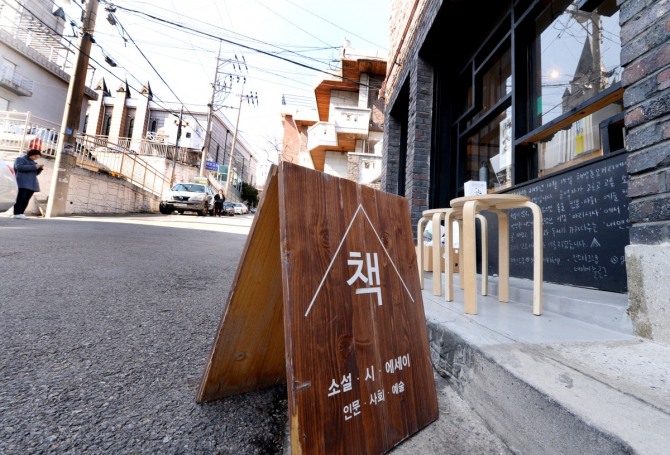 |
| A sign stands in front of Goyo Bookstore, one of a handful of small bookstores that have popped up in Haebangchon, last Friday. (Park Hyun-koo/The Korea Herald) |
But cafes, exotic eateries and artists’ studios have been popping up there since as early as 2006, turning it into a trendy hangout spot. Owners remodel old buildings to save costs, turning shabby properties into fashionably vintage ones.
As of 2016, about one-tenth of the area’s 13,000 residents are foreign, according to the local Yongsan-gu Office. The initial reason for the area’s rise was one based on practicality -- its proximity to the booming Itaewon and Gyeongnidan areas, but with cheaper rent, real estate agents say.
“There’s a quiet charm here now,” said Kim Hyo-min, a 24-year-old art student browsing in a small shop Thursday. “It’s more relaxed than the rest of Seoul.”
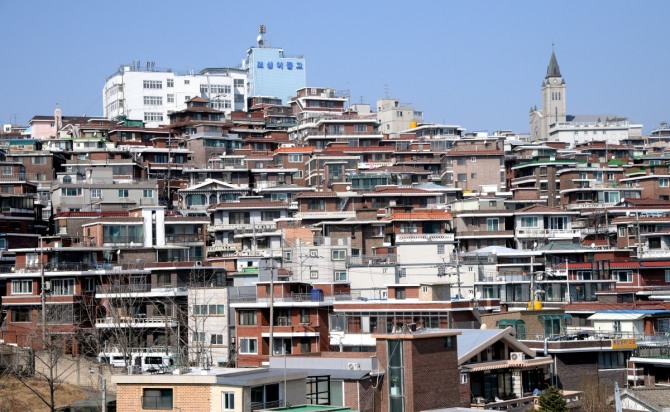 |
| A view of Haebangchon (Park Hyun-koo/The Korea Herald) |
Haebangchon was home to a throng of knitting factories in the ’60s and ’70s. In the ’90s, the neighborhood began to wane as its landmark Sinheung traditional market and surrounding stores went out of business, unable to withstand the onslaught of large retail chains. And in the 2010s, after a decade of stagnation, low rent drew in artists who needed studio space and foreign nationals looking for affordable accommodations.
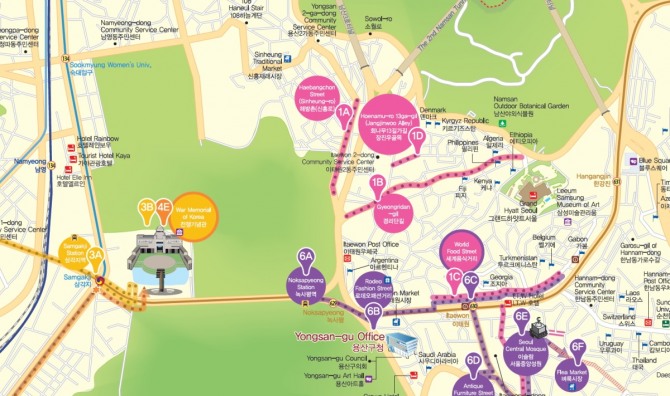 |
| A map of Haebangchon, located in the center, and nearby areas (Yongsan-gu Office) |
“This year, we’ll be renovating the alleys inside the market and its roof,” said Han Gwang-ya, a professor of architecture at Dongguk University leading the initiative to revive Haebangchon. “For now, our goal is to spruce up the infrastructure there.”
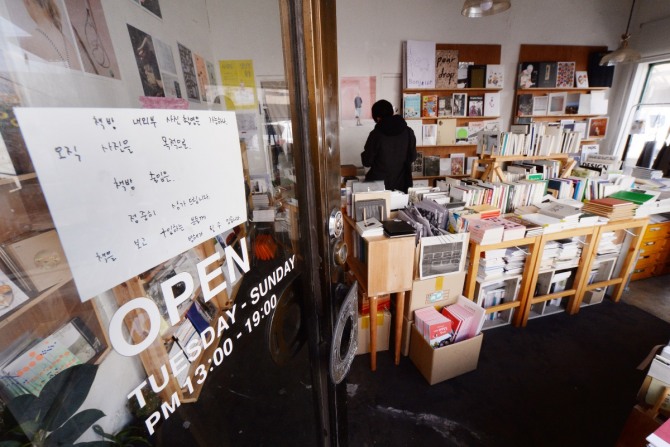 |
| Customers browse Goyo Bookstore, one of a handful of small bookstores that have popped up in Haebangchon, last Friday. (Park Hyun-koo/The Korea Herald) |
Celebrities and artists have begun frequenting the area as well. Placed on a shelf in Goyo Bookshop, situated on a hill near Haebang Church, is a signed copy of Man Booker awardee Han Kang’s “The Vegetarian” dedicated to the store. Small notes carrying musings written by the owner are pasted on some of the books.
Comedian Ro Hong-chul has set up a small bookstore here as well. Storage Book and Film is another bookstore with a variety of books that reflect the owners’ tastes -- independent publications, translations of obscure foreign texts and works by up-and-coming writers.
But the shop owners stress they aren’t idealistic dreamers: Their goal is to make a living, however small, from their book sales. Like the neighborhood, their stores are a mix of artistic sensitivity and necessity.
“I want to rebut views that highlight the bookstore as a ‘pure’ space of culture that doesn’t consider profits,” writes the owner of Goyo Bookshop in an essay published in a local magazine’s November 2016 issue. “Selecting good books is the beginning of selling good books.”
Haebangchon is still far from a lucrative neighborhood. “It’s not bustling with customers on weekdays. Only people who come here come here mostly on weekends and at nights,” said a cafe owner who asked for anonymity. “We’re in the black thanks to low rent and increasing foot traffic, but only barely.”
By Rumy Doo (doo@heraldcorp.com)

























